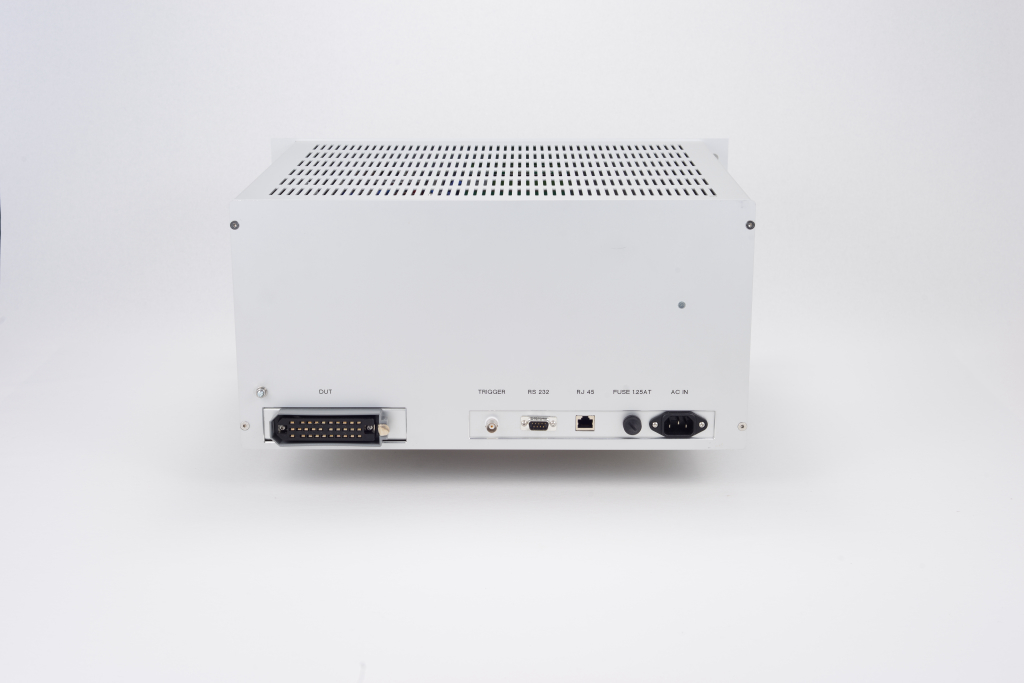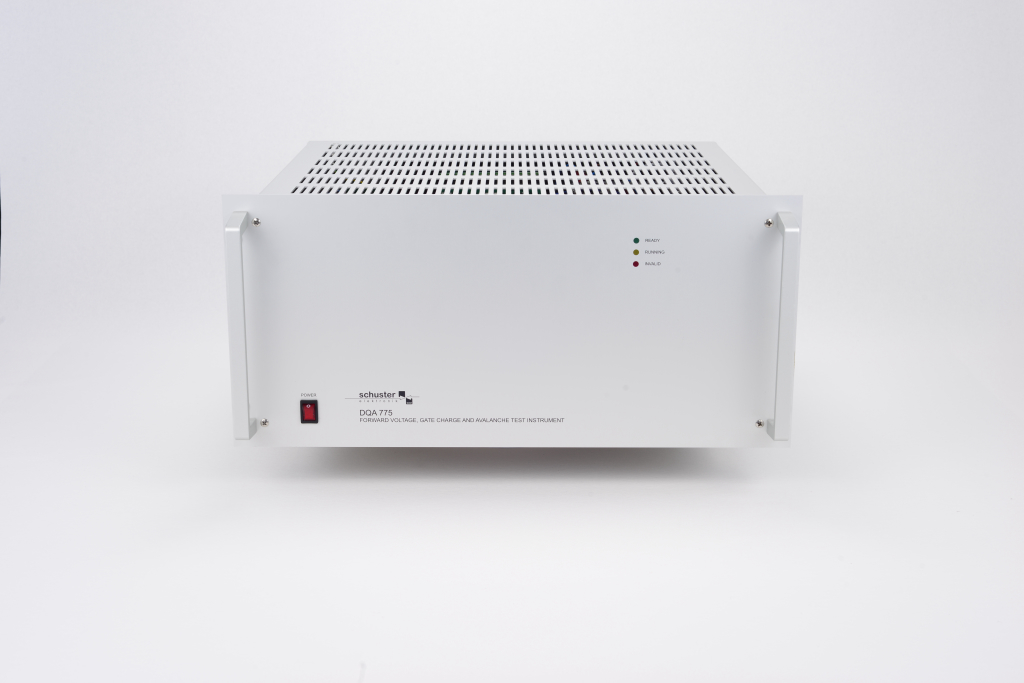DQA 775 - Durchlass- und Gateladung mit Avalanche Test
- Forward voltage measurement
- Gate-Drain/Source charge measurement
- Avalanche-testing of MOSFETs
- Designed for integration into automated test system
- Communication via serial interface or Ethernet
- Forward voltage VCE
0 to 10V, resolution 1 mV - Load current IL 1 to 900 A with pulse durations from 300 to 10,000 µs
- Incl. VG-voltage source / current source
- 1 to 20 V / 0,01 to 100 mA
- Data acquisition and calculation of gate charge
- Data acquisition and calculation of avalanche voltage at currents up to 200 A and load inductance of 50 µH
Merkmale
The DQA 775 is used to measure on-state voltages and gate charges, as well as to test the avalanche behavior of MOSFETs.
To determine the forward voltage, the test object is operated with the set current pulse. The voltage drop is measured during the last millisecond before the end of the pulse and then made available via the interface. The test current is taken from a capacitor battery in the device.
To determine the gate charge, an adjustable open-circuit voltage is applied between the drain and source of the test object to be blocked. The gate is then charged from an adjustable starting voltage with a constant current until an end voltage is reached. The gate-source and drain-source voltages are recorded. The gate-drain charge is determined by measuring the duration of the Miller plateau.
As of firmware version V2.3, it is possible to have the gate charge of the test object calculated not only based on the Miller plateau, but also to specify two gate voltages as the measuring range within which the charge measurement takes place.
To carry out the Avalanche test, the gate of the test object is first activated. A coil with inductance L=50 µH in series with the test object is charged to a maximum current value. If this is reached, the gate of the device under test is switched off. The charged coil transfers its energy to the DUT, causing it to enter the avalanche state. During the test, the curves of the collector current and collector-emitter voltage are recorded.
The maximum avalanche voltage that has occurred and the duration of the avalanche are reported as the measurement results of the avalanche test as 50% values of the maximum voltage.


